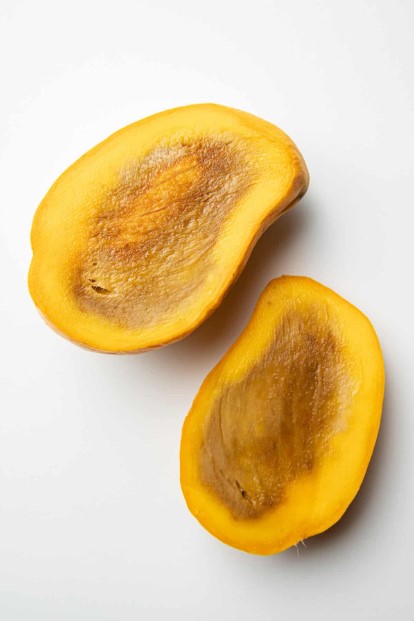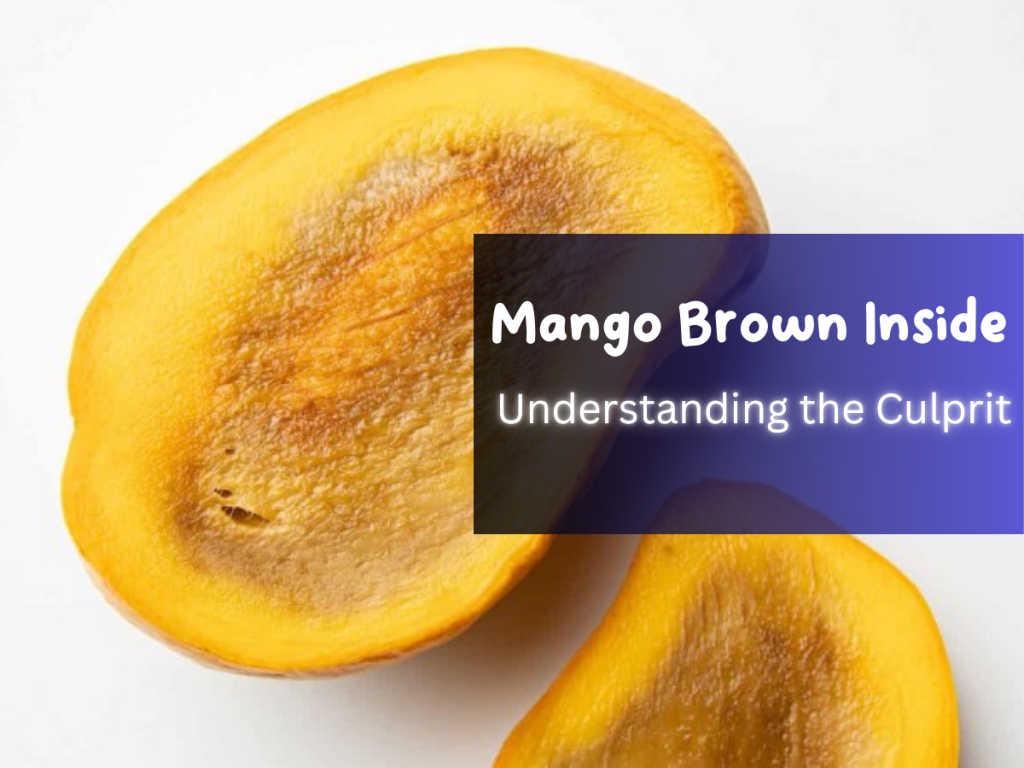Introduction
Mangoes are renowned for their vibrant colors and juicy flesh, making them a beloved tropical fruit enjoyed by many. However, encountering a mango with brown discoloration inside can be disheartening. This article will explore the reasons behind this phenomenon and shed light on the factors that can cause your mango to turn brown inside. By understanding the potential culprits, you can take steps to prevent this discoloration and continue to relish the deliciousness of your mangoes.
Overripe Mangoes
Overripeness is one of the most common reasons for brown discoloration inside a mango. As mangoes mature and approach their peak ripeness, the enzymes responsible for breaking down the fruit’s sugars can become overly active. This excessive enzyme activity can lead to the browning of the flesh. Overripe mangoes may also exhibit mushiness, an off-putting texture, and an unpleasant fermented aroma.
Prevention Tip: Monitor the fruit’s firmness and smell to avoid overripe mangoes. A ripe mango should yield slightly to gentle pressure and emit a sweet aroma from the stem end. The mango may be past its prime if it feels excessively soft or emits an overly strong smell.

Internal Fruit Damage
Internal fruit damage can also cause browning inside a mango. This damage may occur during handling, transportation, or improper storage. When the fruit experiences bruising or other physical trauma, enzymes are released, which can lead to browning of the affected area. While the external appearance of the mango may seem fine, the internal damage becomes evident when the fruit is cut open.
Prevention Tip: Handle mangoes with care to minimize bruising. When selecting mangoes, examine them for any signs of external damage. Properly store mangoes in a cool, dry place or refrigerate them to maintain quality and minimize the risk of internal damage.
Fungal or Bacterial Infections
Mangoes are susceptible to fungal or bacterial infections, resulting in brown discoloration inside the fruit. Fungi, such as anthracnose or stem-end rot, and bacteria, like bacterial black spots or bacterial canker, can infiltrate the mango’s flesh, causing it to turn brown or develop dark spots. These infections are often more prevalent in areas with high humidity or inadequate fruit hygiene.
Prevention Tip:
- Practice good fruit hygiene by washing mangoes thoroughly before consumption.
- Ensure that mangoes are appropriately dried after washing to prevent excess moisture buildup.
- If you suspect a fungal or bacterial infection, discard the affected mango and avoid consuming it.
Oxidation
Exposure to air can also cause the flesh of a cut mango to turn brown. When the fruit’s flesh comes into contact with oxygen, oxidation occurs. This oxidation reaction, similar to when an apple turns brown after being sliced, can also lead to discoloration in mangoes.
Prevention Tip: If you cut mango and don’t consume it immediately, minimize exposure to air by covering the cut surface with plastic wrap or placing it in an airtight container. This action will help slow the oxidation process and maintain the mango’s appearance.
Conclusion
While encountering a mango with brown discoloration inside can be disappointing, understanding its reasons can help prevent or minimize the occurrence. Whether it’s due to overripeness, internal fruit damage, fungal or bacterial infections, or oxidation, being mindful of these factors can help you enjoy fresh and visually appealing mangoes. By selecting ripe but firm mangoes, handling them carefully, and ensuring proper storage and hygiene, you can savor the deliciousness of mangoes without the unwelcome browning inside. Read article about Dragon Tail Plant and Is a Mango a Melon? in Avi Hoffman Garden.
Yes, you can still eat a mango if it is brown inside. The brown discoloration is often caused by overripeness, internal fruit damage, or oxidation. Still, it does not necessarily indicate spoilage or make it unsafe for consumption. However, the texture and taste of the mango may be affected. It is best to evaluate the overall quality of the fruit by checking for any foul odor or signs of mold. If the mango smells fine and there are no other visible signs of spoilage, it should be safe to eat, although the flavor and texture may not be optimal. If in doubt, it is advisable to discard the mango to ensure food safety.
The brown color on a mango typically signifies overripeness or internal fruit damage. When a mango becomes overly ripe, the enzymes responsible for breaking down sugars become too active, leading to the browning of the flesh. Physical damage during handling or transportation can also cause the fruit to turn brown. While the brown color may affect the appearance and texture, it does not necessarily indicate spoilage or make the mango inedible.







